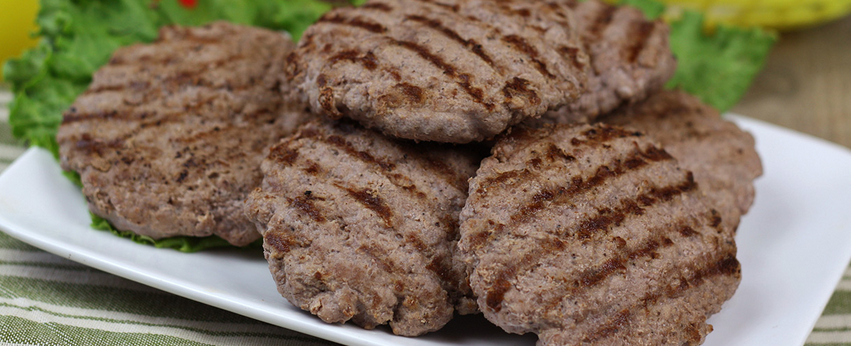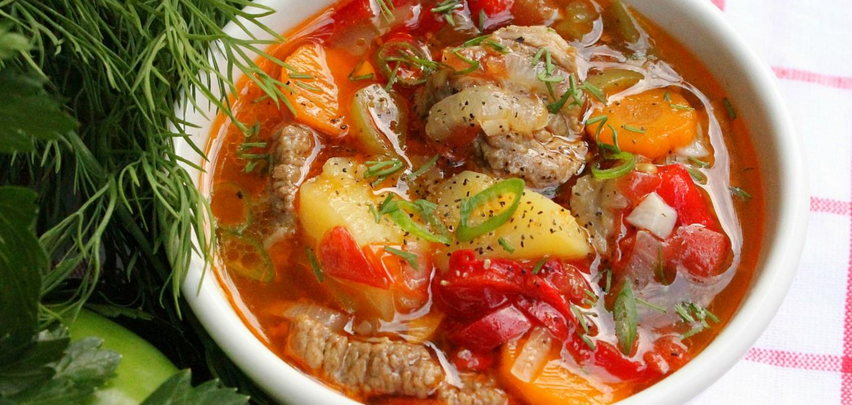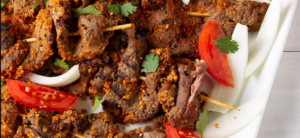Fall-Off-The-Bone Good: Guide to Slow Cooked Beef Ribs in the Crock Pot

As a New York chef who’s spent more nights in a professional kitchen than I can count, I’ve plated filet mignon and torched crème brûlée to perfection. But when I get home and the apron comes off, you know what hits the spot? A slab of slow-cooked beef ribs. And not just any ribs—beef ribs that simmer for hours in the crock pot until they fall apart with nothing more than a gentle nudge from your fork.
- Choosing the Right Ribs: What to Look For
- Ingredients for Classic Crock Pot Beef Ribs
- Slow Cooking Instructions: Building Layers of Flavor
- Alternative Cooking Methods: Oven, Pressure, and Microwave
- Flavor Variations: Ribs with a Twist
- Cooking Time and Method Comparison Table
- How to Serve: First Courses and Full Meals
- Balancing Sweetness and Acidity in Sauces
- Make-Ahead Tips and Storage Advice
- Creating a Rib Rub Worth Repeating
- Why Patience Always Pays Off
- Using Leftovers Creatively
- Pairing Wines, Beers, and Non-Alcoholic Drinks
- Making It Kid-Friendly Without Losing Flavor
- Why This Dish Never Gets Old in My Kitchen

Choosing the Right Ribs: What to Look For
Before we even talk seasoning or sauce, let’s talk about the star of the show—beef ribs. There are a few types you’ll see in the butcher shop or grocery store, and choosing the right one makes all the difference.
Short ribs are my go-to. They’re rich, well-marbled, and pack deep beefy flavor. You’ll also find back ribs, which have a little less meat but still deliver if cooked low and slow. Flanken-style ribs (cut across the bone) are great for grilling but can also work beautifully in a crock pot if you want quicker flavor absorption.
Look for meat that’s evenly marbled with fat but not overly thick with gristle. You want ribs that will break down slowly and reward your patience with juicy, melt-in-your-mouth bites.
Ingredients for Classic Crock Pot Beef Ribs
Great ribs don’t need a laundry list of ingredients—just the right combination of aromatics, seasoning, and a slow-cooking liquid that does the heavy lifting. Here’s what I use in my home kitchen every time I want a guaranteed win:
- 3–4 pounds of bone-in beef short ribs
- Kosher salt and freshly cracked black pepper
- Garlic powder and onion powder
- Smoked paprika for that rich BBQ undertone
- 1 cup of beef broth or stock
- 1 cup of your favorite BBQ sauce (I use one with molasses and chipotle)
- 1 tablespoon Worcestershire sauce
- A splash of apple cider vinegar or balsamic for brightness
- Optional: a touch of brown sugar or honey for sweetness
Rub the seasoning onto the ribs first. Sear them if you have time—it adds dimension. Then layer your liquid and aromatics in the slow cooker. Let time and heat do the magic.
Slow Cooking Instructions: Building Layers of Flavor
Here’s where the real transformation happens. I like to treat the crock pot like a gentle braising oven—it’s not just about dumping everything in. Here’s how I build flavor in layers:
Season the ribs generously and, if possible, sear them on all sides in a cast iron pan. This caramelizes the meat and locks in flavor.
Pour the broth, sauce, and seasonings into the slow cooker. Place the ribs bone-side down, slightly overlapping but not stacked like a log pile.
Cook on low for 8–9 hours, or on high for 4–5. Resist the urge to lift the lid—it lets out moisture and slows down cooking.
During the last hour, baste the ribs with the sauce and let them simmer uncovered if you want a stickier finish. Or transfer them to the oven under the broiler for 5 minutes for caramelization.
It’s not fast food—it’s food that rewards patience with flavor.
Alternative Cooking Methods: Oven, Pressure, and Microwave
While the crock pot is my first love for beef ribs, there are other ways to get them tender and full of flavor—even when you’re short on time or looking to switch things up.
In the oven, I use a Dutch oven or a heavy roasting pan with foil. The ribs are seasoned and nestled into a mixture of broth, vinegar, and BBQ sauce, then baked low and slow at 300°F for about 3 hours. Halfway through, I baste them and re-seal the foil for a moist finish. The last 10 minutes go under the broiler for that irresistible charred edge.
Pressure cookers are great for cutting the time. I cook seasoned ribs with sauce on high pressure for 45 minutes and let them naturally release for 15. The texture isn’t quite as silky as crock pot ribs, but it’s close—and perfect for a weeknight.
Microwaving isn’t ideal for full cooking, but works for reheating leftovers. I recommend covering slices with sauce and a splash of broth, then warming on medium heat in short bursts so the meat stays juicy.

Flavor Variations: Ribs with a Twist
Once you’ve nailed the basic recipe, you can riff on it like jazz. Sometimes I go smoky and southern with a hickory-maple glaze, other days I go Korean-style with gochujang, soy, sesame oil, and ginger. You could even go Mediterranean with rosemary, garlic, and tomato paste blended into a red wine base.
Another favorite of mine? Bourbon-glazed ribs. A bit of brown sugar, bourbon, and mustard whisked into your base sauce turns those ribs into something you’d serve at a backyard wedding or Saturday night feast.
I love that beef ribs adapt well to just about any flavor you throw their way—as long as they get time, acid, salt, and fat, they’ll shine.
Cooking Time and Method Comparison Table
Below is a chart I give to culinary interns when we talk about adapting a single protein for different home kitchens. It helps you plan based on time and tools, without sacrificing quality.
| Method | Temperature | Cook Time | Texture & Notes |
| Crock Pot (Low) | ~200°F / 93°C | 8–9 hours | Ultimate tenderness, deep flavor |
| Crock Pot (High) | ~300°F / 149°C | 4–5 hours | Still tender, but a bit less silky |
| Oven (Covered) | 300°F / 149°C | 3 hours | Needs basting; great crust finish under broiler |
| Pressure Cooker | High Pressure | 45 minutes | Fast, juicy, slightly less layered flavor |
| Sous Vide + Broil | 165°F / 74°C | 18–24 hours | Restaurant-level, complex texture |
| Microwave Reheat | Medium Power | 3–5 minutes | Only for leftovers; use with broth and cover for moisture |
How to Serve: First Courses and Full Meals
I don’t believe in ribs being an afterthought. When I serve them, they’re either the star of the plate or the soulful surprise in a multi-course spread.
For a first course twist, I’ll shred the rib meat and spoon it over creamy polenta with a drizzle of reduced braising liquid. That dish has started more than one dinner party with applause.
As a main, I like to plate ribs alongside roasted sweet potatoes, grilled corn, or a zesty slaw. If I’m going rustic, mashed potatoes and green beans do the trick. For a more upscale experience, I pair the ribs with buttered leeks and a red wine jus. And for family-style comfort? Serve with mac and cheese, cornbread, and a big pitcher of iced tea.

Balancing Sweetness and Acidity in Sauces
Beef ribs crave balance. Their richness calls for contrast, and that’s where your sauce becomes more than just a finishing touch—it’s the harmony. I always ask myself: what’s my sweet note, and what’s my acidic counterpoint?
Molasses or brown sugar brings warmth and depth. Honey gives brightness, and maple adds complexity. But pair that with something tangy: apple cider vinegar, balsamic, even a squeeze of fresh lemon at the end. I once did a smoked cherry glaze with sherry vinegar that made the entire table stop talking mid-bite.
The key is not to overwhelm the beef. You’re amplifying what’s already there, not covering it up. I keep tasting until that “oh wow” moment hits—when the sauce makes the meat taste even more like itself.
Make-Ahead Tips and Storage Advice
One of the reasons I love slow-cooked ribs so much is how forgiving they are. You can prep them the night before, toss them in the slow cooker in the morning, and let them do their thing while you live your life.
For make-ahead hosting, I cook the ribs a day in advance, then cool them in their sauce overnight. The next day, I skim off excess fat, reheat gently in a Dutch oven or back in the crock pot, and finish under the broiler for texture.
Stored properly in the fridge, beef ribs keep beautifully for 3–4 days. They also freeze well—just slice or separate the portions first, and pack them with a bit of sauce to lock in moisture. They’ll hold up for up to two months.
Creating a Rib Rub Worth Repeating
Your spice rub is your signature—it’s what makes guests ask, “What’s in that?” I keep my base simple: kosher salt, coarse black pepper, garlic powder, onion powder, smoked paprika, and just a pinch of cayenne. From there, it depends on the vibe.
For something more Southern, I’ll toss in mustard powder and a little celery salt. For a coffee-rubbed effect, finely ground espresso goes shockingly well with beef. And if I’m going barbecue-style, a spoonful of brown sugar makes it sing.
Rub the mixture on generously, let it sit on the meat for at least 30 minutes (or overnight), and you’ve already started layering flavor before a drop of sauce even hits the pan.
Why Patience Always Pays Off
There’s no getting around it—beef ribs take time. You can’t rush connective tissue into tenderness. But every hour they spend in low heat is an hour the collagen breaks down into gelatin, the fat renders, and the flavors deepen.
As a chef, I often work against the clock. But this is one dish where time is your ally, not your enemy. When I come home, put the ribs in the crock pot, and smell that rich aroma filling the apartment eight hours later—it’s like being welcomed by flavor itself.
It reminds me why I started cooking in the first place—not for the applause, but for moments like that.

Using Leftovers Creatively
If you’re lucky enough to have leftover ribs, don’t just reheat them—reimagine them. I love shredding the meat and mixing it into mac and cheese for a smoky, indulgent lunch. Another favorite? Sliders with slaw and spicy aioli. They’re a hit at casual get-togethers.
I’ve also used leftover rib meat in enchiladas with chipotle sauce or stirred it into a thick tomato ragu served over rigatoni. And for breakfast? Heat it up, crack an egg on top, and throw it under the broiler until the yolk is just set. That’s how you start a morning with flavor.
Leftovers from slow-cooked ribs aren’t just convenient—they’re versatile. Just think of them as a high-flavor building block waiting for inspiration.
Pairing Wines, Beers, and Non-Alcoholic Drinks
Beef ribs demand bold, structured drinks that can match their richness. I love a dry red—think Syrah or Zinfandel—for the tannins that cut through the fat. For white wine lovers, go with a bold Chardonnay with some oak.
On the beer side, I reach for porters or brown ales—roasty, nutty, and full enough to stand next to BBQ sauce. IPAs work too, especially citrus-forward ones that contrast the depth of the meat.
For non-alcoholic pairings, go for complexity: smoky black tea, ginger lemonade, or a pomegranate shrub with seltzer. You want brightness, bubbles, or tannin to balance the unctuousness of the ribs.
Making It Kid-Friendly Without Losing Flavor
Feeding a family? You can tone down the spice without giving up the flavor. I swap cayenne for a dash of smoked paprika and use a sweeter, tomato-based BBQ sauce that’s more familiar to kids’ palates.
For sides, I keep things comforting: buttery mashed potatoes, baked beans, or honey-glazed carrots. Leftover rib meat also makes a killer grilled cheese or quesadilla that both kids and grown-ups devour.
Don’t be afraid to let the kids get a little messy—finger-licking is part of the fun.
Why This Dish Never Gets Old in My Kitchen
Some recipes are one-offs. Others become staples. For me, slow-cooked beef ribs are the latter. No matter the season, no matter the crowd, they hit the right notes: hearty, satisfying, packed with depth.
They let me bring restaurant-level comfort to my own dinner table. They’re rustic enough for a weekend cookout, elegant enough for a plated dinner, and flexible enough to adapt to any mood or guest list.
Most of all, they represent the kind of cooking I believe in—low and slow, deeply flavored, built with care. That’s not just a recipe. That’s a philosophy.
Can I use boneless beef ribs in the crock pot?
You can, but you’ll miss the flavor that the bones bring. Bone-in ribs release collagen and deepen the broth. Boneless will still be tender, but they may cook a bit faster and feel slightly drier if overdone.
Do I need to sear the ribs before slow cooking?
It’s not mandatory, but I always do it when time allows. A good sear locks in flavor and adds a deep, savory note that slow cooking alone can’t replicate. Even five minutes per side in a hot skillet is worth it.
How much liquid should I use in the crock pot?
You don’t need to cover the ribs entirely—just enough to reach about halfway up. They’ll release their own juices, and the enclosed space keeps everything moist. Too much liquid and you’ll end up boiling them.
What’s the difference between short ribs and back ribs?
Short ribs are meatier and more marbled—perfect for slow cooking. Back ribs are leaner and have less connective tissue, which makes them slightly less forgiving. I prefer short ribs when flavor and texture matter most.
Can I cook frozen beef ribs in the slow cooker?
Technically yes, but I don’t recommend it. Cooking from frozen adds several hours to your cook time and may leave the center undercooked. Always thaw in the fridge overnight for the best and safest results.
Should I remove the membrane from the ribs first?
If you’re using beef back ribs, yes—the silvery membrane on the underside can be chewy. With short ribs, you usually won’t need to, as most butchers remove it. But if you see a tough layer, it’s worth peeling off.
What type of BBQ sauce works best with beef ribs?
I lean toward thick, slightly sweet sauces with molasses, brown sugar, or even bourbon notes. If it’s too vinegary, it can overpower the beef. I often mix my own: half store-bought, half custom-blended.
Can I cook beef ribs on high in the slow cooker?
Yes, especially if you’re short on time. They’ll be tender after 4–5 hours, though the texture might be less silky than the low-and-slow method. I usually go high when I want dinner on the same day.
How do I thicken the sauce at the end?
Remove the ribs, then simmer the liquid on the stovetop or switch the crock pot to high with the lid off. You can also stir in a cornstarch slurry—just mix one tablespoon of cornstarch with cold water and whisk it in.
Why are my ribs still tough after hours of cooking?
Most likely, they just need more time. Connective tissue takes time to break down, especially in thicker cuts. If they’re still chewy, keep them going another hour or two on low, and they’ll soften right up.
What’s the best way to reheat leftover ribs?
Low and slow again—covered in foil in a 275°F oven with a splash of sauce or broth. You can also reheat in a skillet over low heat or in the microwave if wrapped in a damp paper towel to keep moisture in.
Can I freeze cooked beef ribs?
Absolutely. I cool them fully, slice them if needed, and freeze them with some of the sauce in a sealed container. They’ll keep for up to two months and reheat beautifully for future meals.
What sides go best with crock pot beef ribs?
I love creamy mashed potatoes, cornbread, mac and cheese, or roasted Brussels sprouts. For something lighter, go with coleslaw or a vinegar-based cucumber salad. Contrast in texture is key.
Can I cook vegetables with the ribs?
Yes, but be strategic. Root vegetables like carrots and potatoes work well and can go in from the beginning. More delicate vegetables should be added in the last hour so they don’t get mushy.
Do beef ribs work well for holidays or entertaining?
They’re fantastic for both. They feel special without being fussy. I’ve served them at Christmas dinners and Sunday brunches. You can even slice them and arrange on a platter with roasted garlic and herb butter.




Post Comment